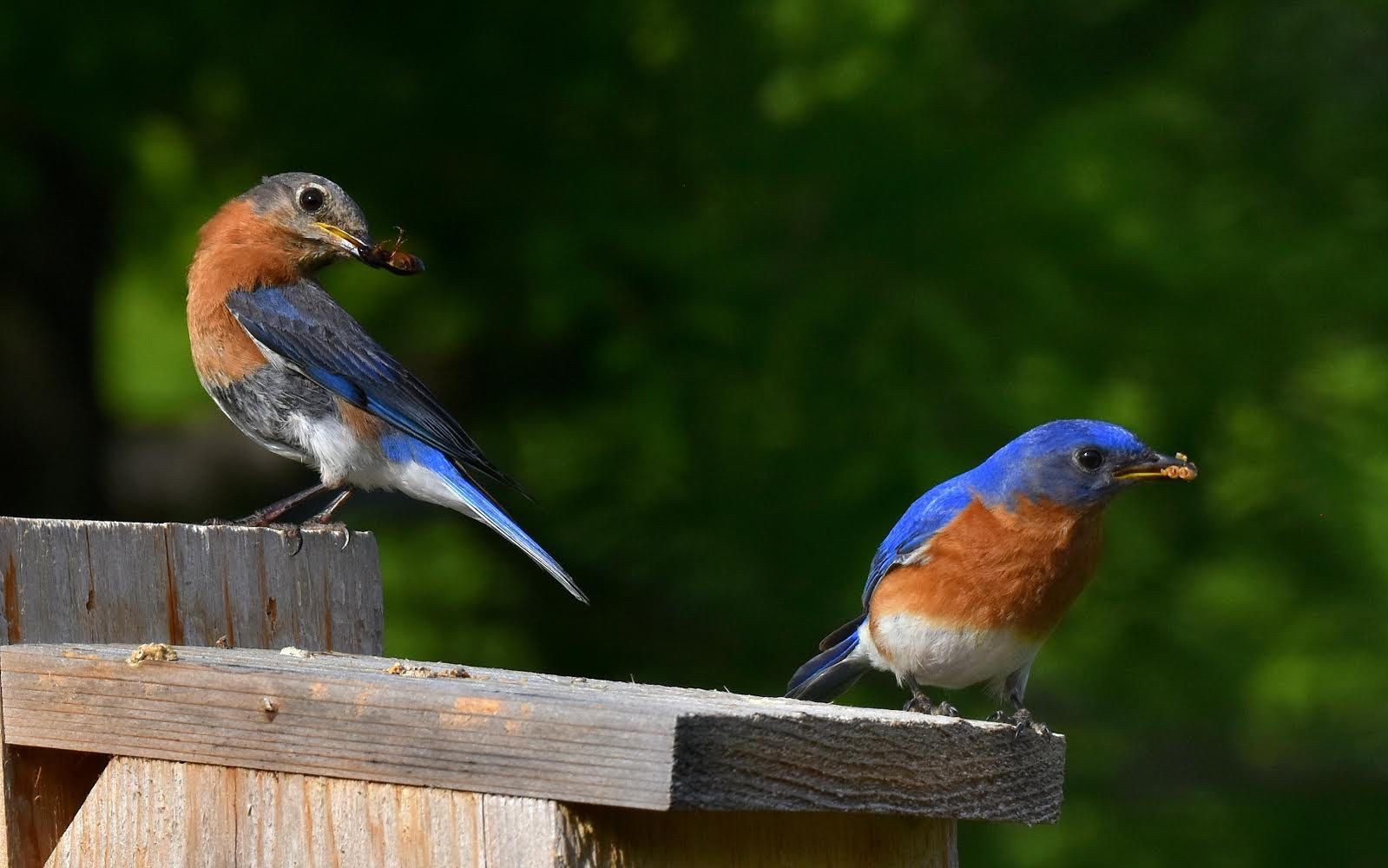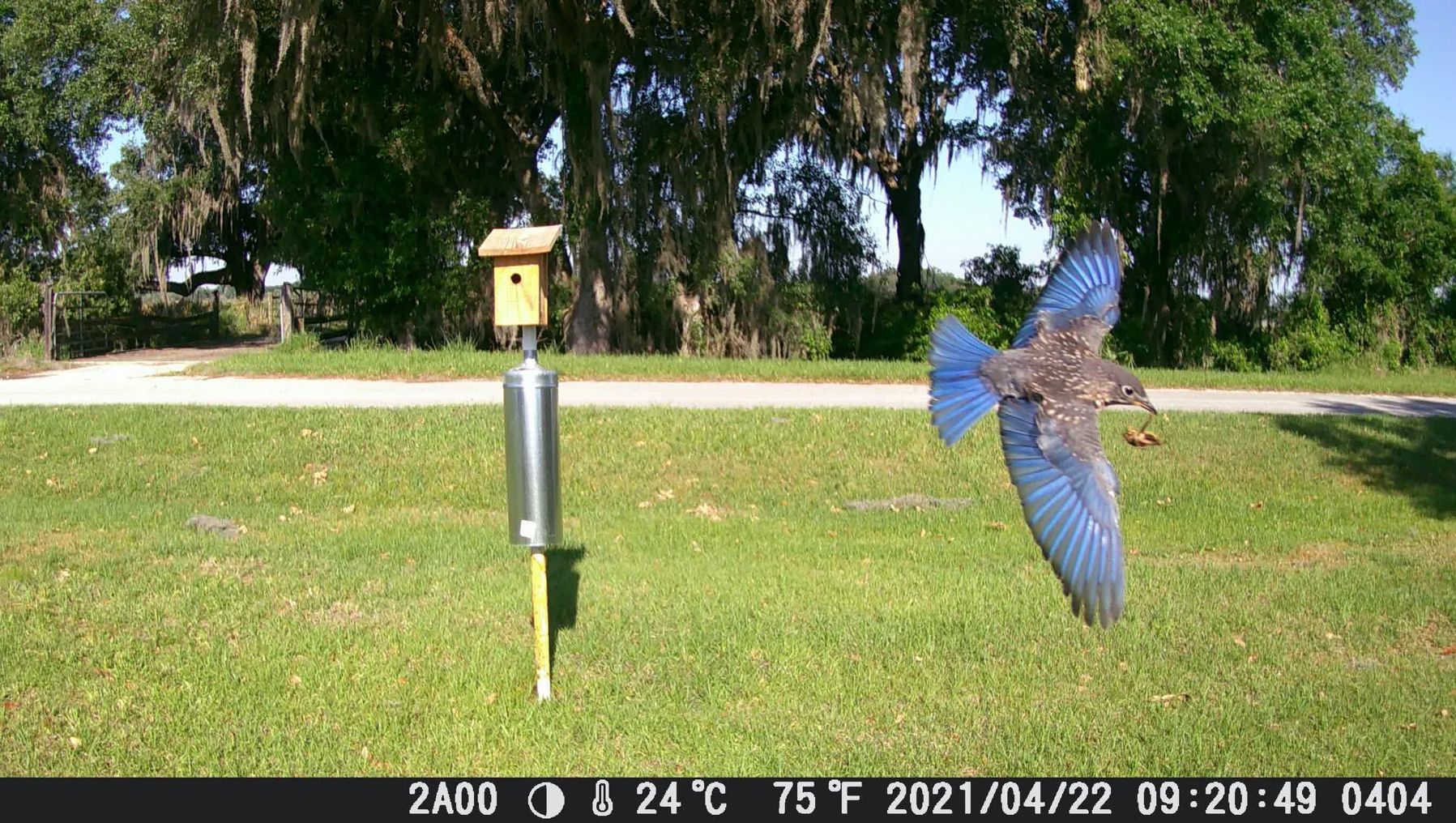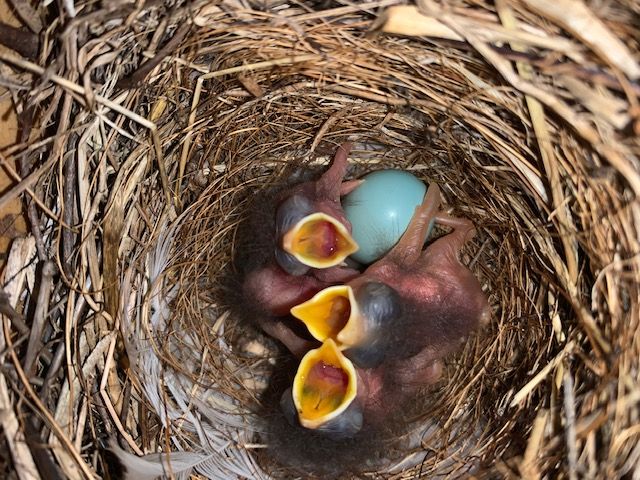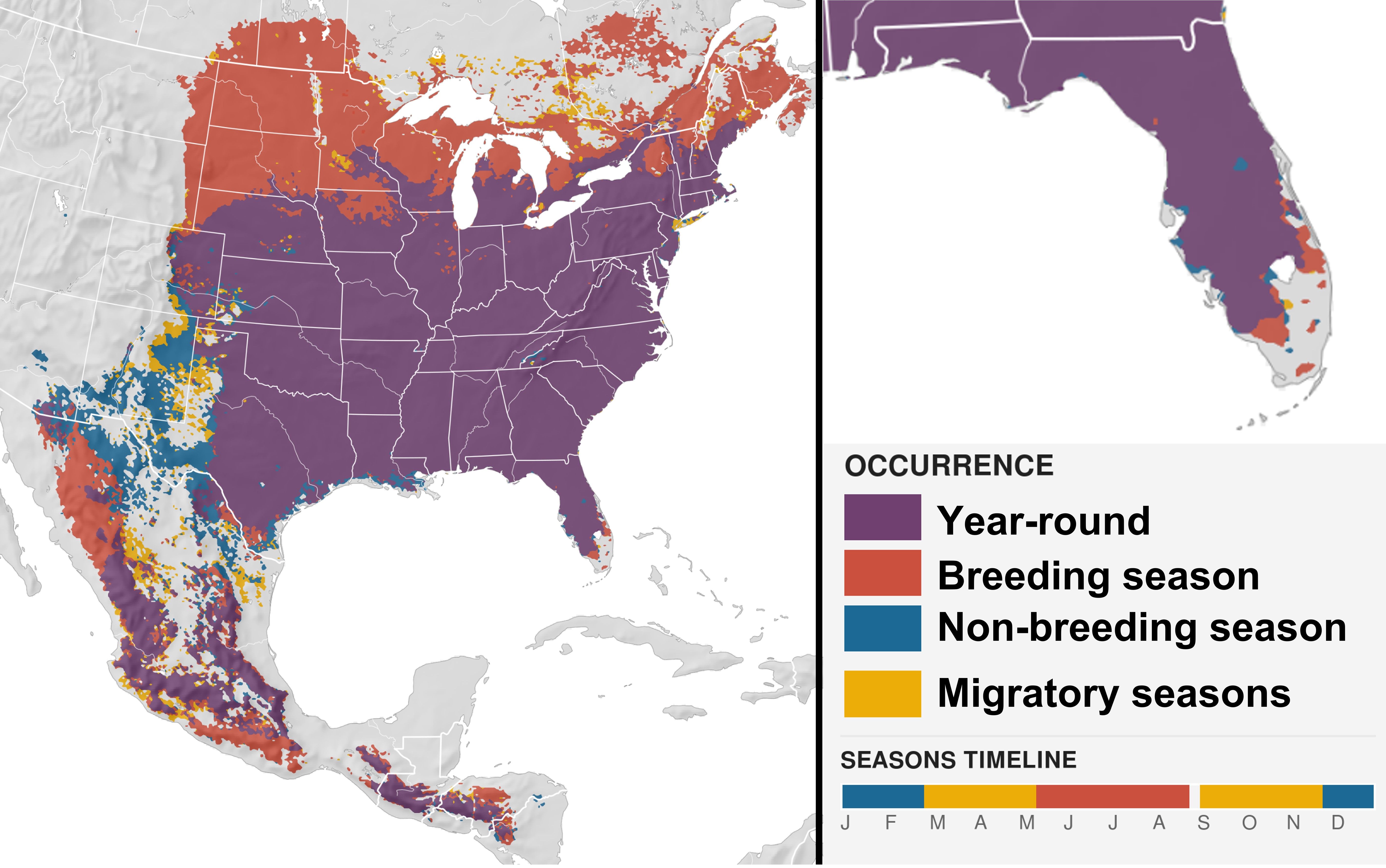Nestbox Success Story

Credit: James Askins
- Breeding = Winter, Spring, Summer
- Habitat = Grassland, Flatwoods
- Status = Migratory
Scientific Name: Sialia sialis
Common Name: Eastern bluebird
Habitat: Semi-open habitats with sparse understory and ground cover, including agricultural and urban areas.
Physical Description: The eastern bluebird is 6–8 inches long and has a wingspan of 9–12 inches. Eastern bluebirds are sexually dimorphic, meaning both sexes look different as adults and juveniles (Figure 1). Adult males have blue upper parts with red-orange throat and breast, and a white belly. Adult females have blue-gray upper parts, a gray-brown wash on back, dull blue wings and tail, and a paler orange throat and breast. Juveniles have browner plumage with white streaking above and spotting below (Figure 2).

Credit: Michelle Barrett
Weight: 1.0 – 1.1 ounces
Reproductive Rate: 3–7 eggs, with an average of 5. Incubation 13–16 days. May raise 2 or 3 broods a year.
Lifespan: 6–8 years in the wild, 10 years in captivity
Dispersal & Home Range: Juveniles form flocks of several families that range widely but usually stay near their birth area. In resident populations, late-season fledglings may stay with their parents through the winter. Nesting territories range from 2 to 20 acres and shrink as the season progresses, possibly due to increasing insect availability. Territory size also decreases as available nesting cavities in an area increase. Winter home ranges are larger than nesting territories.
Biology and Behavior: The eastern bluebird mainly eats insects (Figure 3). They are a sit-and-wait predator, perching low and fluttering down to the ground to catch insects. Bluebirds are typically monogamous and breed in their first year. Courtship involves the male singing and fluttering in front of the female. The female does most of the nest construction, using pine straw and, grasses. Bluebirds are secondary-cavity nesters, meaning that while they construct the nest, they do not construct the cavity. Instead, bluebirds use natural hollows in trees or abandoned cavities created by other birds.They readily nest in bird boxes or other artificial cavities. Females lay 3-6 small, blue-green eggs. Around 83% of eggs laid will hatch. The young are altricial, meaning they require care and feeding by their parents during development, and weigh less than 1 ounce at hatching (Figure 4). Both parents bring food to the nestlings. Nestlings’ eyes will open on days 5–6 and they can maintain body temperature at 7–8 days. They are fully feathered and capable of short flight by day 13–14. Fledglings leave the nest at 16–21 days on average but feeding by parents continues for up to 3 weeks after leaving the nest.

Credit: Rangeland Wildlife Ecology Lab, UF/IFAS Range Cattle REC

Credit: Gail Sloan
History: Historic distributions of eastern bluebirds were likely limited to fire-maintained mature pine forests and tree fall gaps in eastern deciduous forests. By the early 1900s, bluebirds had expanded into grassland ecosystems, probably due to human-induced increases in trees on grasslands. Bluebird populations, however, declined through the first half of the 20th century due to competition for nest sites with invasive house sparrows and European starlings. Beginning in the 1960s, conservation campaigns and deployment of nest boxes led to a population increase in bluebirds across North America. Despite these successes, the breeding range of bluebirds in Florida has gradually contracted northward, likely driven by a loss of habitat and climate change.
Did You Know? Because they are easy to observe and readily use artificial nest boxes, bluebirds have become a model species for answering fundamental questions in ecology and evolution related to behavior, health, life history, and morphology.
Fast Facts:
- The eastern bluebird is the most widespread of the three bluebird species in North America.
- Bluebirds can see in ultra-violet, and this may play a role in social behavior.
- Brightness of plumage is likely related to individual health.
- Bluebirds can spot their insect prey from over 60 feet away.
Distribution: Widespread in eastern North America from southern Canada to Central America. Found throughout north and central Florida. Some in Florida migrate from northern US; others are year-round residents. Migrants arrive between late October and mid-November and can double the size of local populations.

Credit: eBird; , from The Birds of The World, birdsoftheworld.org, published by the Cornell Lab of Ornithology
Predators: Birds, snakes, mammals, and fire ants prey on nests, and hawks attack both adult and juvenile bluebirds. Both males and females will dive-bomb potential predators, including humans, that approach their nest. Common parasites include lice, mites, flies, eye worms, and flukes. Breeding females use tremble-thrusting, where they place their bills deep in the nesting material and shake the nest to remove parasitic larvae.
How You Can Help:
- Provide a bluebird nest box with a predator guard.
- Participate in the Cornell Lab NestWatch program.
- Keep cats indoors and avoid pesticide use to ensure bluebirds have insect prey.
- Don’t remove natural nest sites such as tree snags and fence posts with cavities.
To learn more, visit: